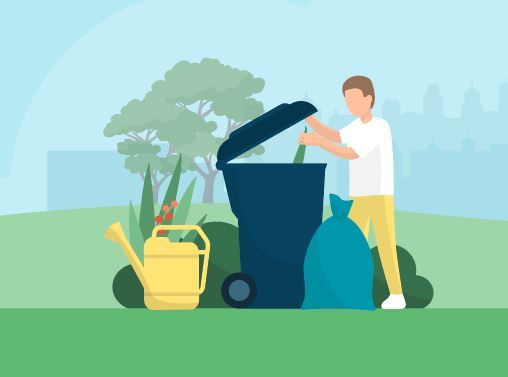
Going Digital for Chargeable Garden Waste Subscriptions
25 January 2019
Joel Scott
One the hot topics for our customers at the moment is Chargeable Garden Waste services. Many have taken the decision that they need to start changing to collect green waste, as they seek to increase income generation to support the delivery of their other services.
But as the waste team and their transformation colleagues consider how they can use digital services to streamline their Garden Waste process, I think some are missing a trick.
As you would expect, as local authorities introduce a registration and subscription process for their Garden Waste service most are also looking at how they can increase the efficiency and lower the cost of managing the process.
And quite rightly, the first step for many is getting residents to register online. Getting customers to use website forms to submit their details, requirements and collect payments is obviously an important way in which they can increase efficiency.
Not just in Chargeable Garden Waste, but in other areas too, we have seen many examples of the reduction in the number of phone calls and emails to the contact centre and the depot where councils use online forms.
But the danger is that people only consider the front-end of their solution when thinking about efficiency and miss the opportunity to increase efficiency in the operational part of the process as well.
In the planning and delivery phases of the process there are points to consider too:
How do you know what garden bins are already at the property? In fact, do you know where your garden bins are at all?
Who manages the additional tasks to fulfil the subscription service? How is a bin delivery scheduled or posting out stickers arranged?
How does the new customer (which is actually the property) get added to a round? And importantly, how do you make sure the customer is added to an efficient round? Might there be a better way than using the same rounds you used for your free service?
And how does the new customer information get made available to the crew? It’s the first time the customer has had to pay for the service, so you don’t want to miss the collection the first time round.
And where status updates or issues are recorded on the In-Cab unit how does that information make its way back to the customer? What you don’t want is them to have to call back on the phone to find out what’s going on.
What I find surprising is that many of the customer platforms vendors seem to be selling the message that ‘line of business’ solutions are no longer needed in the local government. Their suggestion seems to be that their platforms “could be capable of taking on almost all of its digital functions”.
This seems crazy to me. The idea that anyone will one-day plan waste collections rounds or manage housing stock or many other specialist functions on the same platform they use to manage customer contact is just odd.
In my view, the focus should be on best-of-breed and integration to create efficient, automated end-to-end processes that transform both the front-end customer experience and the back-end service delivery.
On the operational side this isn’t really about replacing people, but rather supporting the people you have with to work more efficiently and effectively.
Blog Search
Monthly Archives
- April 2019 (1)
- February 2018 (3)
- December 2017 (1)
- October 2017 (3)
- September 2017 (5)
- July 2017 (10)
- June 2017 (4)
- May 2017 (1)
- April 2017 (3)
- March 2017 (10)
- February 2017 (3)
- September 2016 (3)
- August 2016 (4)
- August 2015 (3)
- June 2015 (5)
- May 2015 (2)
- April 2015 (1)
- February 2015 (2)
- January 2015 (6)
- December 2014 (12)
- November 2014 (10)
- August 2013 (6)
- June 2013 (8)
- May 2013 (13)
- April 2013 (40)
- March 2013 (14)
- January 2013 (21)
- December 2012 (8)
- November 2012 (38)
- October 2012 (6)
- July 2012 (3)
- April 2012 (3)
- March 2012 (5)
- November 2011 (4)
- October 2011 (3)
- September 2011 (18)
- August 2011 (1)
- July 2011 (19)
- May 2011 (5)
- April 2011 (22)
- show more less
Popular Tags
blogEnhanced FeatureFAQMapsNew FeatureReportstestingWasteWizardWM GrittingWM Streets